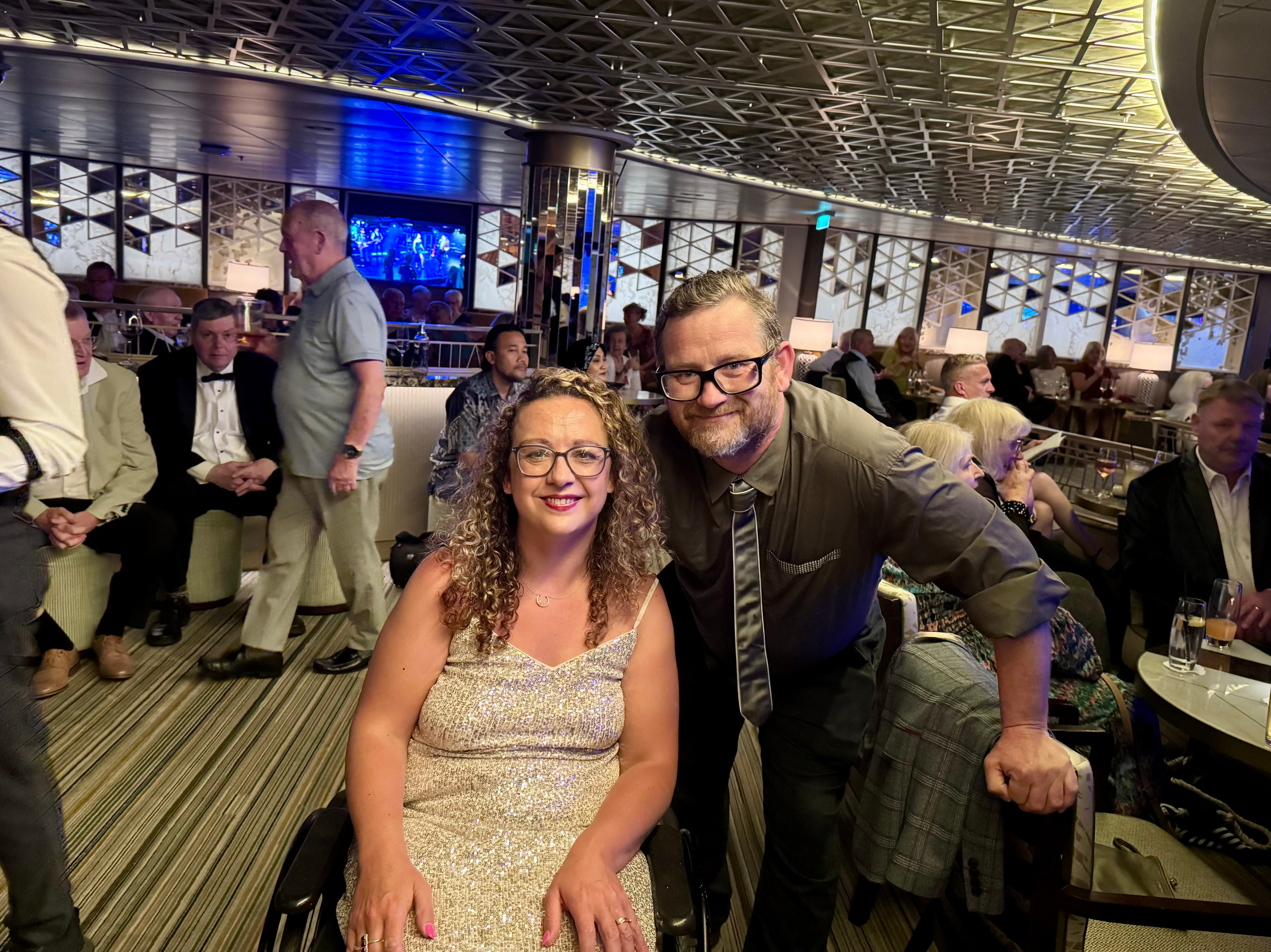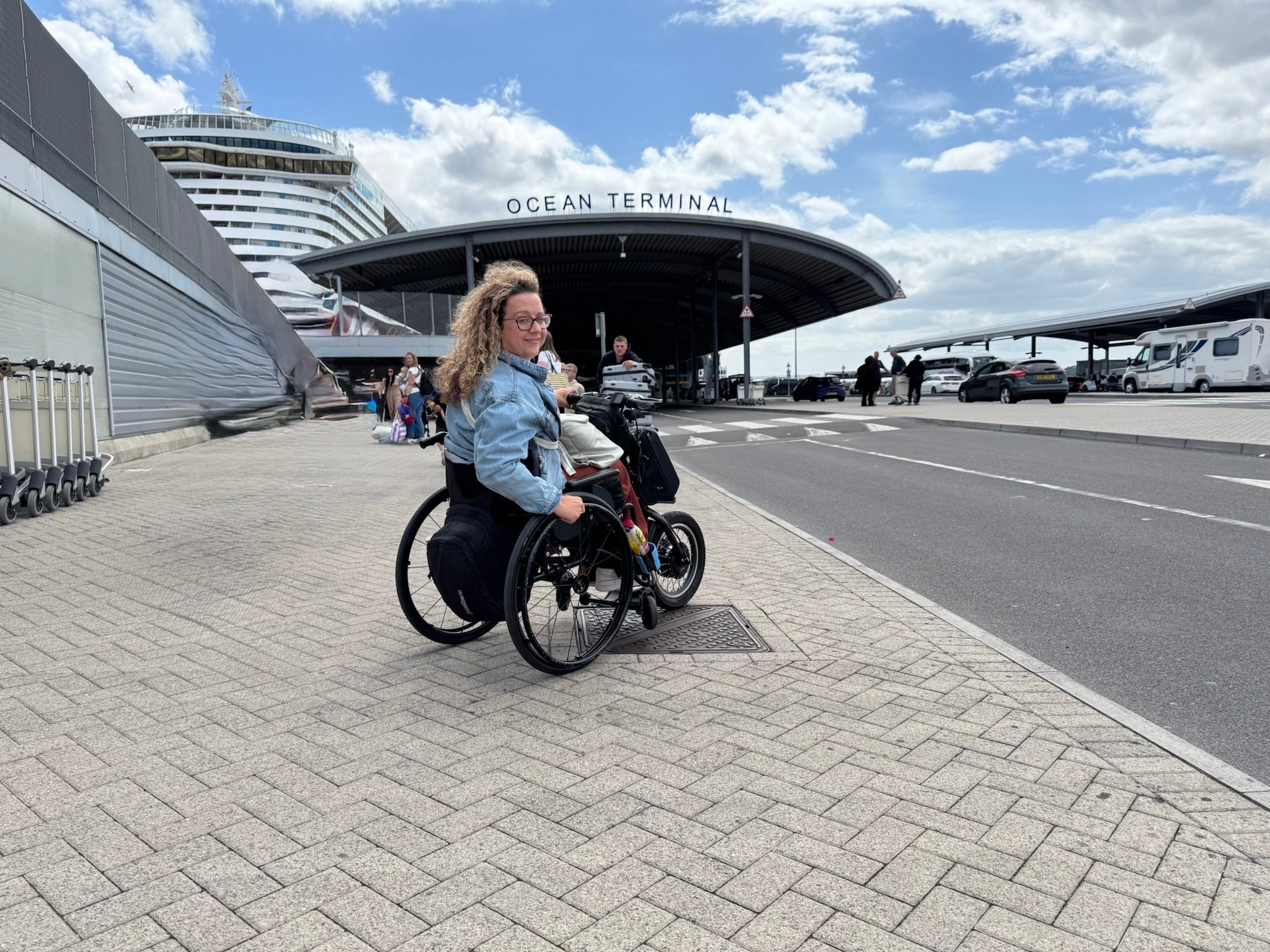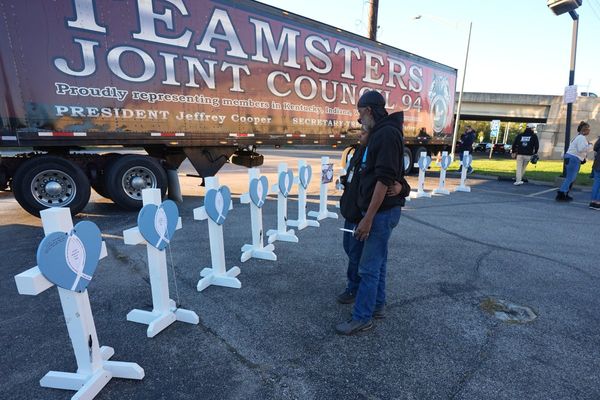
Room service arrived just after sunrise. The door slid open with the push of a button – no reaching, pulling or strain. I rolled out onto the balcony still wrapped in a blanket and watched the sky shift to pink and gold. Pastries, fruit and smoothies waited on a tray. Everything I needed was already there. That’s what luxury looks like when you’re a disabled traveller. I don’t look for excess; it’s ease that’s most important.
Cruising is often promoted as one of the most accessible ways to travel, but accessibility alone doesn’t equal luxury. Accessible travel is too often defined by what’s “possible” rather than what’s pleasurable.
Usually, travel starts with a checklist: Have I sent the access email? Do I need to explain my wheelchair measurements again? Have I triple-checked the itinerary? But on a supported cruise aboard P&O’s Arvia, hosted by Limitless Travel, something unexpected happened. I stopped bracing for unexpected accessibility issues, because everything had already been thought through.

The two-week sailing departed from Southampton and visited ports in Spain and France, including Barcelona, Málaga, Toulon and A Coruña. I travelled with my husband, Darren, as part of a small hosted group, supported throughout by Limitless’s care team. The company works in partnership with P&O Cruises to coordinate adapted transport, accessible cabins, tailored excursions and personalised care packages – making sure disabled guests can experience everything the ship and shore have to offer, without the stress.
What ‘accessible luxury’ really means
Traditional luxury is about what you get – champagne flutes, spa menus, thread counts. Accessible luxury is about what you don’t have to deal with. On this cruise, I didn’t have to repeat my needs at check-in, I wasn’t left hunting for ramps and lifts, I didn’t map out accessible loos or exit routes before I could relax. It was all done, and that freedom – to move, to rest, to join in – felt radical.
Read more: 9 of the best cruises to see the Greek islands
The roll-in shower didn’t feel clinical. I could reach the balcony without getting stuck. A table space was cleared in advance so my chair glided in with no fuss. The waiter turned to me with “Green tea, right?” before I’d even asked.
I felt like I was part of the moment; enjoying inclusion instead of performing it. I dressed up to enjoy the celebration of black-tie nights, not because I felt pressured to, but because I could; because I had the energy and I felt like I belonged.

The power of small details
Accessibility on board Arvia went beyond minimum standards to create an inclusive, high-end experience. Automatic doors led into spacious cabins with proper turning circles, wet rooms were finished with style, not hospital sheen, and balcony thresholds were flat, not fiddly.
Around the ship, there was attention to detail. Staff quietly moved chairs before we arrived and remembered our favourite things to eat and drink. Limitless Travel’s team saved spots in entertainment venues, like the Crow’s Nest bar, where we sipped cocktails and listened to live piano music without fighting for space.
Freedom – backed by support
Physical access is just one part of accessible travel; the power of emotional ease is often forgotten. A truly rare luxury for many disabled people, who are more used to travelling with a constant internal “What if...?” fear.
Limitless offered concierge-level care that adapted to us. Want help into the jacuzzi at sunrise when it’s less crowded? Already arranged. Prefer to skip the group port tour and explore solo? No problem.
Read more: An unforgettable family cruise through Alaska
Support flexed around our choices. My husband usually takes on the carer role, but here, he could rest too. That’s a gift for both of us.
What might have felt awkward elsewhere – asking for help, taking up space – was absorbed into the flow of the trip. No guilt, no fuss, and no need to explain. It was about being known, not as a special requirement, but as a guest whose comfort mattered – the essence of good hospitality.

Choice is its own luxury
Two standout restaurant experiences, Sindhu and The Epicurean, offered fine dining without compromise. Both restaurants had accessible entrances, spacious seating, and menus that felt celebratory, with options from fillet steak to lobster. Attentive waiters were happy to chat through guests’ dietary needs.
Entertainment, lounges, and pools (with hoists) were all accessible, and Limitless staff were on hand to assist where needed. But importantly, there was no pressure to join in with everything. Freedom to opt in or out created a rhythm that respected both autonomy and ease.
Guest Vicky described the experience well when she told me: “Accessible luxury, for us, is being taken care of so we can fully relax – knowing all our needs are considered and being treated with respect. That means spacious rooms, accessible en suites, a choice of restaurants and entertainment, and venue entrances and seating that work for everyone.”

Breaking the mould
The idea of group travel, particularly with support, can conjure up limiting assumptions, especially around disability – but this trip defied them. It wasn’t rigid or medicalised, it was joyful. Some guests explored the ship and ports independently, while others leaned into the community. Many did both.
What emerged wasn’t just an accessible cruise, but a better cruise – one that offered choice, connection, and calm for all. That’s not only appealing to disabled travellers. It speaks to anyone who values stress-free experiences and thoughtful hospitality.
Why this model matters
The Limitless model proves that inclusion can be elegant, intuitive and scalable. It’s about elevating service so everyone can feel welcome from the start. Travellers are ageing and expectations around inclusion are rising. And the idea that accessibility has to feel clinical or second-best no longer holds. If that sounds like a niche market, think again.
Because when comfort and care go hand in hand, accessibility doesn’t feel like an exception. It feels like a standard worth setting. Luxury is about ease. And when that ease includes everyone, the result is a universal premium experience. Luxury should not only be for those who arrive without barriers. It should be measured by how many it welcomes in.
Carrie-Ann travelled as a guest of Limitless Travel, supported by P&O Cruises, Avanti West Coast, and Transmobility.
Read more: Best P&O Cruises holiday deals
Should children be banned from cruise ship hot tubs?
Celestyal unveils Grand Prix cruise featuring F1 legend David Coulthard
Baroness Tanni Grey-Thompson unveils plan to improve air travel accessibility
A first look at the new features on board MSC World Asia ahead of its 2026 launch
I worked on cruise ships. Here’s the rookie mistake that could ruin your trip
!["[T]he First and Fifth Amendments Require ICE to Provide Information About the Whereabouts of a Detained Person"](https://images.inkl.com/s3/publisher/cover/212/reason-cover.png?w=600)






